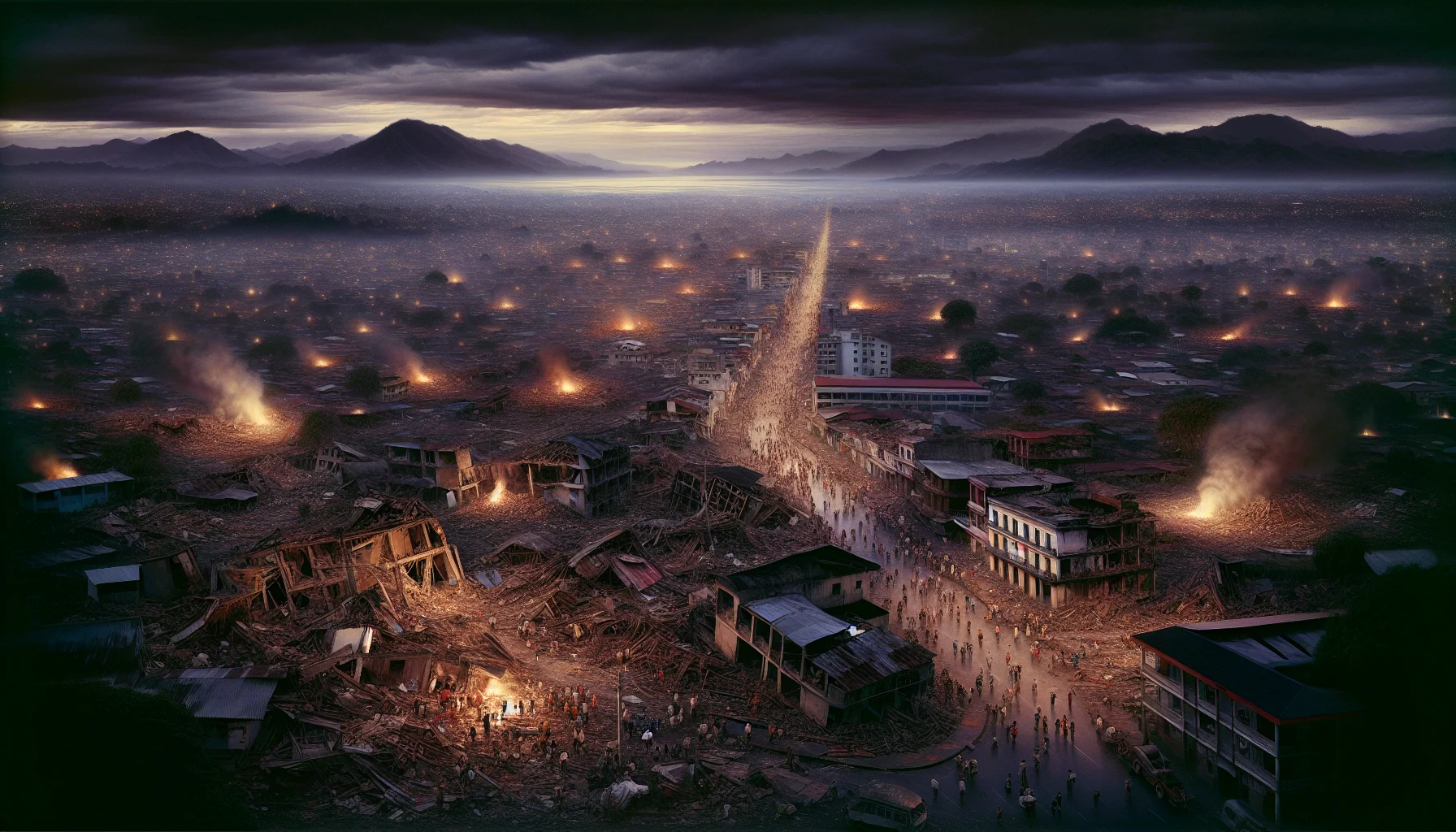
The 1972 Nicaragua Earthquake
by: The Calamity Calendar Team
December 23, 1972
For those who experienced it, the early morning hours of December 23, 1972, remain unforgettable. The 6.3 magnitude earthquake that rattled the heart of Managua, Nicaragua, left a deep scar—a literal tremor that shook the city's foundations and splintered its growing ambitions.
A City on the Brink
In the years leading up to 1972, Managua blossomed into a thriving urban center. Attracted by its strategic economic and political position in Central America, investors and businesses flocked to the city. However, the population boom came at a cost. The rapid development saw Managua’s skyline dotted with structures that, beneath their modern façades, concealed a troubling truth: a widespread lack of structural integrity in building designs. Situated along the notorious ring of fire, Managua was always under the looming threat of seismic activity. This reality was underscored by its location along the meeting point of the Cocos and Caribbean tectonic plates.
The city, well aware of its susceptibility to nature's capriciousness, nevertheless continued expanding, perhaps unable or unwilling to fully prepare for the catastrophic potential of an earthquake.
The Witching Hour Quake
At exactly 12:29 AM, in the inky darkness of December 23rd, Managua's residents were abruptly awakened by the earth’s wrath. Buildings swayed ominously as the ground below violently shook—a prelude to the chaos that ensued. The earthquake's epicenter, only a mere 10 kilometers beneath the surface near the city's heart, unleashed its fury where the bustle of life was most vibrant.
The quake unfolded in terrifying precision: unreinforced structures crumbled into heaps of debris, and homes with silhouettes once familiar became unrecognizable. Fires broke out swiftly, feeding off ruptured gas lines and adding a new layer of terror for already disoriented survivors. As dawn broke, smoke from these fires cast a pall over the city, a haunting sight that forewarned of the colossal task ahead.
The Wounded City
Amid the early light of day, the full extent of the devastation unfolded. An estimated 6,000 lives were lost almost instantaneously, each a tragic piece of the city's soul snatched away by nature's indifference. Around 20,000 faces bore injuries that told stories of close calls and heartstopping moments of survival. For approximately 250,000 individuals—nearly the entirety of Managua’s thriving populace—their homes were now decimated memories in a landscape echoing with desolation.
Thanks for subscribing!
The economic toll mirrored the human cost, with damages appraised at staggering levels up to $800 million—a brutal blow to the national economy. Schools, hospitals, and government buildings were ravaged, crippling essential public services and leaving the threads of governance frayed amidst the rubble.
An International Response Shadowed by Clouds
As news spread beyond Nicaragua's borders, the world responded with commendable urgency. Aid in the form of financial resources, medical supplies, and food poured in from the U.S., Europe, and neighboring Latin American countries. However, the influx of assistance encountered a familiar adversary: entrenched political corruption and ineffective bureaucracy. This bureaucratic quagmire not only slowed recovery efforts but also sowed seeds of disillusionment among those left vulnerable and needing immediate aid.
Despite this, the cooperation of international governments and non-governmental organizations brought glimmers of hope, albeit brief, into the long nights that followed the quake. Hospitals set up temporary wards while debris-filled streets became avenues of relief distribution.
Lessons Etched in Tremors
The earthquake became more than a moment of crisis—it was a catalyst, compelling Nicaragua and the global community to rethink urban resilience. Engineers and urban planners began dissecting the mechanisms of Managua’s collapse, seeking answers to prevent history from repeating itself. Building codes were scrutinized, urging a departure from the flawed practices that once prioritized rapid development over safety.
Worldwide, cities in similar seismic settings observed Managua's tragedy as a cautionary beacon. Over time, insights gleaned from the 1972 earthquake helped inform architectural advancements, leading to the design of structures that stand a better chance when the earth next decides to shake.
A City’s Resolve Amidst Ruins
Today, Managua's skyline has begun to heal, marked by buildings adhering to rigorous standards that frame resilience not as an ideal, but a necessity. Yet, beneath this rebuilt exterior lies an enduring narrative—a testament to human vulnerability, the unpredictable strength of nature, and the shared resolve to rise from ruins.
For those who live there now, and for global observers who hold Managua's lessons close, the echoes of that December night in 1972 remain ever-present. It serves as a lasting reminder of both what was lost and what can be learned—a story inscribed not just in memory, but in stone, steel, and the spirit of those who continue to rebuild.
Stay in the Loop!
Become a Calamity Insider and get exclusive Calamity Calendar updates delivered straight to your inbox.
Thanks! You're now subscribed.